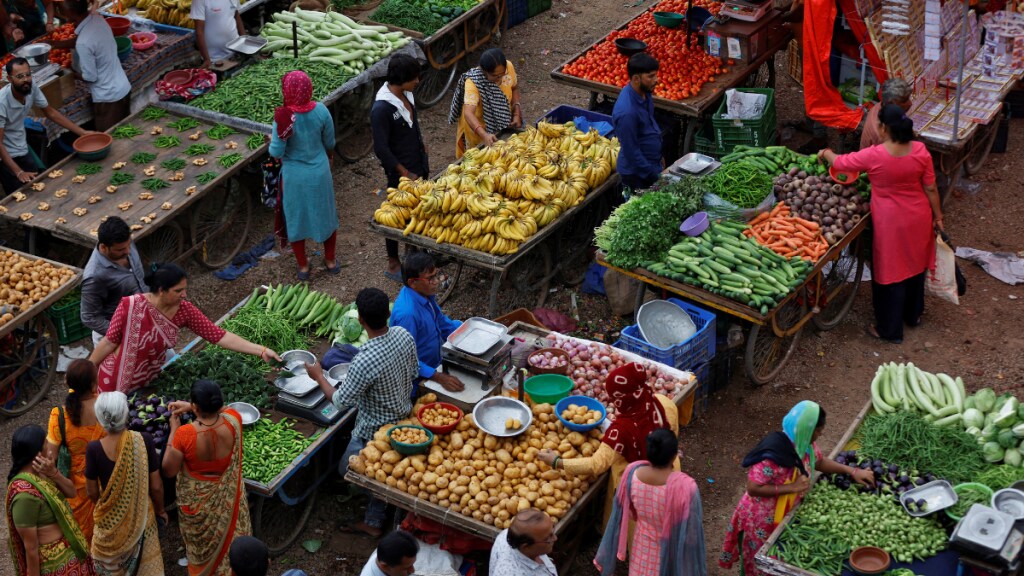In the heat of electoral politics, the news of inflation easing can be both a healing balm and a rallying point. To the politicians vying for voter’s attention across crucial states this month promise and performance on prices will matter in every connect sought with the proverbial man on the street.
With retail inflation touching a four-month low at 4.87 per cent in October and a shade below the 5 per cent in the previous month and in the same period vegetable price rise down to 2.7 per cent from 3.4 per cent earlier there may be some comfort. Though, the overall consumer food price rise continues to linger around 6.6 per cent.
We spoke to Dr C Rangarajan, economist and former governor of the Reserve Bank of India on what to read into this, what to watch out for and the possible options if the progress has to be towards that preferred goal of 4 per cent inflation rate, if not lower.
Dr Rangarajan began by saying, “I have always taken the view that the overall inflation is not simply determined by what happens to the individual commodity prices.” Explaining, he said, “there is a seasonality as far as individual commodity prices are concerned. For example, vegetable prices, typically ease and supplies improve around these months of the year triggered by better water availability.” Instead, he said, “I attribute the decline in price trend to the fact that the reserve money growth has been moderated and this stance must be maintained.” While his views always carry weight, they gain an added significance now considering that there is a heightened air of anticipation from what may result from the upcoming RBI policy meetings around December 6th.

To Dr Rangarajan, if the macro variables of liquidity and money supply are not controlled then the general price level will increase and will show up more in areas where there is scarcity. “The point I wish to make is that the overall trend in prices in the coming months will depend upon the view that is being taken on the availability of the overall liquidity and money supply. If, we relax on this then we should be prepared for inflation going up,” he said.
The cereal prices, he pointed out, “will off course depend on what happens to the Kharif output and therefore from January onwards, the tends in cereal prices will become clear. To understand this better, one would have to look at production-weighted rainfall. That is the overall rainfall is not just a summation but weighted according to the importance of a region in overall production.”
The best possible estimates available at this stage are the figures released last month (on October 27th) by the ministry of agriculture and farmers welfare. These are the first advance estimates of production of major Kharif crops for 2023-24. As per this, the area under rice which is the major Kharif crop is estimated to be higher by around 2 lakh hectare over previous year final estimate and by around 4.5 lakh hectare over average rice area. Its production is also estimated to be higher by about 1 lakh tonnes as compared to average Kharif rice production. Other cereal crops area such as Kharif maize and jowar is also estimated to be higher as compared to previous year as well as average area under these crops. However, total Kharif pulses production for 2023-24 is estimated to be lower than previous year due to climatic conditions. Total Kharif pulses production during 2023-24 is estimated at 71.18 LMT.
There is however a caution that this first production assessment for 2023-24 (Kharif) is largely based on the average yield of last 3 years and may undergo change after receiving the yield estimates based on actual crop cutting experiments.
Nonetheless, Dr Rangarajan maintained, “my main point is much depends on the overall view that we take of the availability of liquidity supply and if the aim is to really control inflation and to keep it between 4 per cent and 5 per cent if not get it down to the preferred 4 per cent, then I do not see a case for any relaxation in the monetary policy.” In other words, the interest rates “will have to remain at whatever level they are currently.”
He reminded that the problem with inflation is its differential impact on different sections people. Therefore, in some cases where availability is important, action will have to be taken to augment the supplies.


